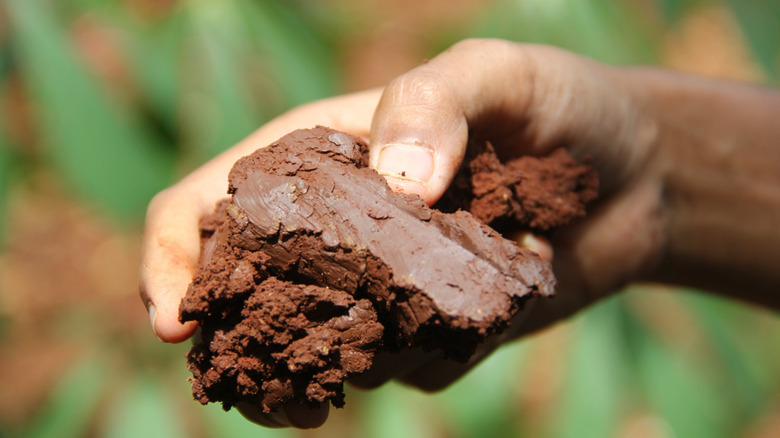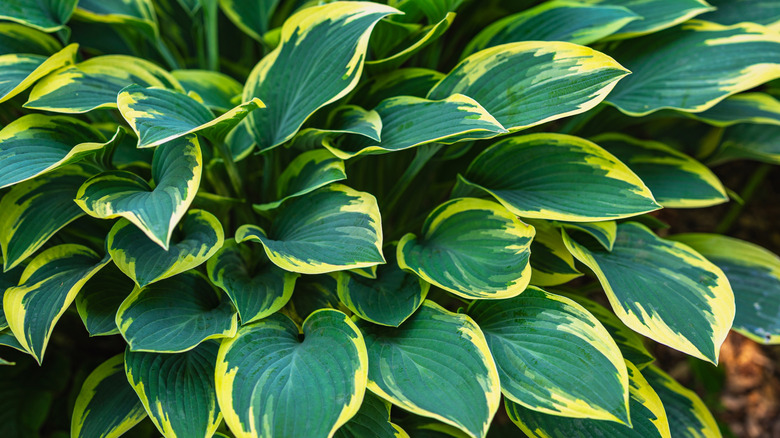What To Know Before Planting This Low-Maintenance Perennial In Clay Soil
While spending hours working on your garden can be a joy, it's always nice to have some plants that grow and thrive with little effort on your part. But if you have especially clay-heavy soil, finding plants that can thrive easily can be a bit of a challenge. Luckily, with only minimal effort, you can still grow hostas — those classic workhorses of the shade garden — in clay soil.
Hostas are a genus of herbaceous perennials, beloved for their low maintenance and large, lush leaves. They can come in a range of shades, from green, to blueish, to creams and yellows. And though hostas aren't generally grown for their flowers, the fragrant spikes of blooms are a huge hit with pollinators. While hostas' tolerance for clay soil varies somewhat by species and cultivar, many can tolerate clay soil just fine. But you should know that others need their soil amended somewhat to be able to thrive. To amend your soil to improve it for hostas, add compost or peat moss.
Growing hostas in clay soil
Not only do hostas tolerate clay soil, but it can even benefit them and allow them to thrive. This is because hostas prefer soil that stays moist, and clay soil holds onto water well. This can provide advantages during drought, when other soil types are likely to dry out more quickly.
Unfortunately, this ability to hold onto water also makes clay soil more prone to becoming waterlogged, which is why amending your soil with compost can be so beneficial to your hostas' health. While hostas generally require regular watering to thrive, be sure to check that the soil 6 inches down is actually dry before watering, especially if your hostas are growing in water-retentive, clay-heavy soil.
There are many stunning ground covers that grow perfectly with hostas, but not all can tolerate clay soil. That doesn't mean your garden has to be hostas only, as there are other plants that can flourish in clay-heavy shade gardens. Great companions for them include Virginia sweetspire (Itea virginica), inkberry holly (Ilex glabra), and even sweetbay magnolia (Magnolia virginiana). Lungwort (Pulmonaria longifolia) is also perfect for growing next to hostas, as it is another great addition to clay-heavy shade gardens.

